HNUE JOURNAL OF SCIENCE Educational Sciences 2024, Volume 69, Issue 3, 53-62 This paper is available online at https://hnuejs.edu.vn DOI: 10.18173/2354-1075.2024-0046
INVESTIGATING ACADEMIC BOREDOM OF ENGLISH-MAJOR STUDENTS: A STUDY AT NONG LAM UNIVERSITY, HO CHI MINH CITY, VIETNAM Nguyen Lien Huong and Vo Van Viet* Faculty of Foreign Studies and Education, Nong Lam University Ho Chi Minh City, Viet Nam
Corresponding author: Vo Van Viet, e-mail: vvviet@hcmuaf.edu.vn Received May 5, 2024. Revised June 12, 2024. Accepted July 2, 2024. Abstract. Boredom can pose many negative impacts on students' academic performance as well as their quality of life. This study investigated the prevalence of academic boredom among English majors at Nong Lam University and its contributing factors using a quantitative research method. The 427 participants were undergraduate English majors from Nong Lam University from various years of study, selected using a stratified random sampling technique. After academic experts and the literature were consulted, a complete questionnaire was developed. It includes seven-point Likert scale items on disengagement, arousal effects, inattention, emotional upset, and time perception. SPSS 22.0 facilitates the examination of quantitative data obtained from survey responses, with descriptive statistics such as means, frequencies, and standard deviations used to analyze the survey responses. Findings show that English majors at Nong Lam University have experienced a range of sentiments associated with feelings of boredom. Because the majority of responses are favorable or neutral, which means that students acknowledge feelings of boredom, identifying the underlying cause is essential for quick and effective solutions. To assist students in regaining interest and enthusiasm in their daily lives and academic performance, actions need to be taken to find out about the causes and solutions. Keywords: Academic boredom, English-majored, language learning, EFL student.
1. Introduction
Academic involvement and enthusiasm in higher education are crucial pillars that create a positive learning environment. However, within the academic environment, the issue of boredom can often be underestimated, yet it holds significant consequences for both students' educational achievements and their overall sense of well-being [1]. Boredom is a widespread negative emotional state among students, as indicated by Mann and Robinson [2]. Academic boredom, in particular, is a phrase used to characterize emotions related to education, going to classes, and taking exams in both academic and instructional contexts [3] Students across age groups, ethnicities, educational needs, and learning disabilities have all experienced academic boredom [4]. This emotion has been witnessed by students in a wide range of educational contexts [5-7].
For some people, it could be taken for granted that academic boredom is not a matter of excessive worry. B ecause boredom is a common experience for nearly everyone at some point, students are certainly no exception. Some other people consider academic dullness as a productive and creative experience that leads to reflection [8-12].
53
Nguyen LH & Vo VV*
Nevertheless, academic boredom is a predominantly unfavorable and hindering emotion related to achievement, and it is now recognized to have a more significant influence on university students than was previously understood [13]. Boredom while learning hinders both academic performance and student’s enthusiasm for learning. Bored students typically lack the focus and drive needed to succeed academically [14]. Studies show that boredom is one of the most common and detrimental variables influencing students' academic performance [15].
Vodanovich [9] conceives the same notion that in academics, boredom can manifest as a lack of interest in course materials, dissatisfaction during lectures, and reduced motivation for assignments. It results from factors such as teaching methods, course content, individual differences, and the learning environment. Academic boredom can also impact students' achievements, mental well-being, and future career prospects. Therefore, academic boredom, which is a quite complicated and poorly understood part of student life, has recently become a big issue in higher education. It affects students from different backgrounds and majors, but within English majors, it takes on a special form that needs further investigation.
Nong Lam University is well-known for its mix of students from various backgrounds and interests. Therefore, educators, administrators, and policymakers need to understand the ins and outs of academic boredom in this environment to enhance education and student happiness. Furthermore, there has been a tendency for the dropout rate among English majors to rise during the past four years. Therefore, this study delves into the problem of boredom among Nong Lam University English majors, aiming to find out how common it is.
2. Content
2.1. Review of Literature 2.1.1. Description of the Terms
Boredom Boredom is a negative emotional state that is marked by a feeling of dullness and wandering thoughts, making it difficult to concentrate meaningfully on a task. It involves an inability to maintain attention and is often attributed to external factors causing this unpleasant feeling [16]. Boredom includes various elements, including unpleasant feelings, altered time perception, reduced physiological arousal, expressions through facial, vocal, and postural cues, and a motivation to change the current activity or leave the situation [13].
Academic boredom Academic boredom is a multifaceted and predominantly negative emotion linked to academic performance [17]. It is characterized by either low stimulation and reduced physiological arousal [18-19] or, conversely, high arousal [16], [20-21]. This emotion is commonly experienced by students of various age groups, educational needs, and ethnic backgrounds within educational settings, such as during class activities, studying, or testing [3].
Theories of boredom According to early psychodynamic theories, people become bored because they are unable to recognize or suppress their needs for fulfilling activities [17], [22]. Similarly, existentialists contend that it stems from a lack of purpose, inner emptiness, or an inability to discover the meaning of life [17], [22]. Functional theories of boredom highlight emotions as signals that motivate behavioral or cognitive changes [12], [23]. Researchers from this perspective argued that boredom indicated whether an activity served a useful purpose or was meaningful [24-25]. Furthermore, arousal or environmental theories of boredom suggest that it results from inadequate or mismatched stimulation of one's needs and environmental conditions [26]. For instance, Chin et al [20] found that boredom could occur in both high and low-arousal situations due to a disparity between desired and experienced arousal. Moreover, Eastwood et al [27] associated boredom with
54
Investigating academic boredom of English-major students: A study at Nong Lam University…
low arousal resulting from insufficient external stimulation and high internal arousal due to the struggle to maintain focus.
Boredom in the EFL Literature In the realm of foreign language education, individual emotional factors like self-esteem, anxiety, attitudes, and motivation have been thoroughly investigated as key elements affecting the learning process [28-30], but research on the topic of boredom in foreign language learning situations has gained traction relatively recently, primarily in specific EFL contexts like Poland, Croatia, and Thailand, etc. A large number of studies about boredom were carried out in Poland, where researchers such as Kruk [31-32], explored boredom fluctuations among high school students during English classes, finding variations within a single lesson. In another study [31], philology students in Second Life (SL) showed high motivation and low boredom and anxiety levels. Kruk and Zawodniak [33] noted SL's positive impact on motivation due to its low-stress environment. Derakhshan [34] further examined changing individual differences, including boredom among English majors in SL. Other research [35] suggested senior students experienced boredom more frequently, likely due to longer exposure to similar classes. An analysis [36] of boredom changes in four English lessons showed connections to language activities and lesson structure. Recent studies [37] focused on boredom fluctuations, finding links with monotony, predictability, and repetitiveness [34].
In the EFL setting in Croatia, Dumančić [38] conducted a qualitative study to understand how Croatian English language teachers viewed boredom. They identified factors such as subject matter and grammar-focused activities as boredom-inducing. While many participants believed boredom didn't affect their teaching quality, some noted negative effects on their instruction.
Nakamura [39] studied the causes of boredom and discovered classroom boredom in the university EFL environment in Thailand was related to factors such as task complexity, input intensity, poor second language abilities, and disruptive behavior by peers.
Derakhshan et al [34] examined boredom among Iranian EFL students during the COVID- 19-induced shift to online English learning. This study, involving 208 English teachers, investigated the causes of boredom in the online learning context and potential solutions. Data, collected via written questionnaires, identified lengthy monologues, low learner engagement, technical problems, and repetitive tasks as key boredom triggers. The study also suggested addressing these issues through enhanced teacher-learner interaction, fostering personal connections, and resolving technical issues to create a more engaging learning environment.
Coşkun and Yüksel [40] examined boredom among 680 high school EFL students in Turkey. They used 23 Likert-scale questions to assess perceptions of time, engagement, lesson monotony, participation reluctance, and off-task behavior. Analysis with SPSS revealed that boredom primarily stemmed from uninteresting English lessons and participant dissatisfaction. Gender showed no significant differences in boredom levels, but variations were notable based on grade level and academic track. Final-year students and those in the science track reported the highest levels of boredom. Some prior research has looked into the study of negative emotions in learning in Vietnam. Cluster analysis was employed in the study by Tran Thi Thu Mai and Le Thi Ngoc Thuong [41] to evaluate 360 high school students in Ho Chi Minh City's capacity for emotional self-regulation. Similarly, the research by Nguyen Thi Minh Hang [42] focused on coping strategies for negative emotions among 256 middle school students in Hanoi and 210 students in Hai Phong. Huynh Mai Trang and Mai Hong Dao [43] conducted a study on emotions related to students' learning and exam experiences, both in teacher education and non-teacher education programs. The results indicated that students had stronger positive emotions (such as interest, hope, pride, and contentment) compared to negative emotions (such as anger, anxiety, embarrassment, despair, and boredom). Nonetheless, the topic of boredom has not received much attention from academic researchers in Vietnam, serving as the driving force for our research
55
Nguyen LH & Vo VV*
group's commitment to conducting a thorough investigation into this subject. Our objective is to clarify the underlying nature of this phenomenon and provide practical guidance, benefiting both the broader student population and, more particularly, the students at Nong Lam University, in their pursuit of strategies for lessening these negative emotions and facilitating enhanced academic progress. However, within the scope of this article, we will present the findings from the survey that indicate the boredom level of students. 2.2. Methodology 2.2.1. Research design
The study employed a quantitative research design to investigate the prevalence and factors contributing to academic boredom among English-major students at Nong Lam University systematically. 2.2.2. Participants
The participants were English-major undergraduate students enrolled in various academic programs at Nong Lam University. A stratified random sampling technique was utilized to select a representative sample from different academic years. The majority of the sample (91.1%) is made up of batches from 2020 onwards (2020, 2021, and 2022), suggesting a large representation from these recent years. Of the sample, 73.8% of the participants are female, and 26.2% are male. Table 1. Demographic information of the sample
Frequency
Percent
Cumulative Percent
2016
1
0.23
0.23
2017
2
0.47
0.70
2018
7
1.64
2.34
2019
Batch
28
6.56
8.90
2020
103
24.12
33.02
2021
73
17.10
50.12
2022
213
49.88
100.00
112
26.2
26.2
Male
Gender
315
73.8
100.0
Female
Total
427
100.0
2.2.3. Instrument
A structured questionnaire consisting of 7-point Likert-scale items was developed based on the Multidimensional State Boredom Scale (MSBS) proposed by Fahlman et al. in 2013 [44]. The questionnaire included two parts, the first part focusing on demographics information of respondents; the other part focusing on assessing five dimensions of boredom: disengagement (the perception of being uninvolved in a situation - 10 items), agitated effect/ high arousal (a feeling of aggravation, annoyance, restlessness, or nervousness - 5 items), inattention (difficulty maintaining attention and distractibility - 4 items), dysphoric affect/low arousal (emptiness or fatigue - 5 items) and time perception (feeling that time is passing slowly - 5 items).
Data Collection Procedure Before the data collection, ethical approval was obtained from the university's ethics committee. Then the survey questionnaire was distributed electronically through university survey systems, ensuring confidentiality and anonymity of responses. Clear instructions about the purpose of the study were provided to participants and informed consent was obtained before their participation.
56
Investigating academic boredom of English-major students: A study at Nong Lam University…
2.2.4. Data Analysis
Quantitative data obtained from the survey responses were analyzed using SPSS 22.0. Descriptive statistics such as means, frequencies, and standard deviations were computed to summarize demographic information and survey responses.
Validity and Reliability: To ensure the validity of the survey instrument, content validity was established through expert reviews and revisions based on feedback from the pilot study. Reliability was assessed using internal consistency measures (e.g., Cronbach's alpha) for different sections of the questionnaire. Table 1 presents reliability statistics, specifically Cronbach's alpha coefficients, the subscales have relatively high reliability, with Disengagement having the highest (0.93) and Inattention having the lowest (0.89) Cronbach's alpha values. However, all these values are well above the acceptable threshold, indicating good reliability for each subscale. The Cronbach's Alpha for the overall scale is 0.94. The results from this analysis indicate that both the individual subscales and the overall scale demonstrate strong internal consistency, implying that the items within each subscale and the collective items across subscales reliably measure their respective constructs.
Table 2. Reliability Statistics
Subscales
N of Items Cronbach's Alpha of subscales Cronbach's Alpha of the scale
0.94
Disengagement Agitated Affect Inattention Dysphoric Affect Time Perception
10 5 4 5 5
0.93 0.91 0.89 0.91 0.91
2.3. Results and discussion
Table 3 has a detailed explanation of the Agitated Affect subscale. Many levels of agreement or disagreement can be seen across 5 different statements. Overall, students tend to have moderate levels of agreement and neutrality rather than strong agreement or disagreement when assessing the statements. The average score for each statement, which varies from 3.60 to 4.24, shows how much each statement aligns with agitation, anger, impatience, and moodiness. These mean scores, which lie between the “More or less agree” and “Agree” ranges, indicate that respondents typically tend to agree with these statements moderately. The standard deviation data, which vary from 1.51 to 1.65, show how each statement's replies are distributed around the mean. Greater variety in replies is shown by higher standard deviations, which may indicate that respondents had a range of emotional experiences. The average indicates a considerable degree of agreement, although there are significant differences among respondents' answers.
Table 3. Descriptive statistics of the Agitated Affect/ High Arousal subscale
Mea n Std. Dev. n % n % n % n % n % n % n %
35 8.2 39 9.1 55 12.9 168 39.3 71 16.6 32 7.5 27 6.3 3.95 1.51 I am more moody than usual
47 11.0 59 13.8 47 11.0 150 35.1 68 15.9 32 7.5 24 5.6 3.76 1.60 I feel agitated
31 7.3 29 6.8 41 9.6 163 38.2 72 16.9 49 11.5 42 9.8 4.24 1.57 I am impatient right now
57
Nguyen LH & Vo VV*
63 14.8 55 12.9 54 12.6 151 35.4 47 11.0 35 8.2 22 5.2 3.60 1.65 I am annoyed with the people around me
Note: : Strongly disagree, : Disagree, : More or less disagree, : Neutral, : More or less agree, : Agree, : Strongly agree Table 4, on the other hand, shows the statistics of the of the Disengagement subscale. There are numerous degrees of agreement or disagreement among the ten statements. The standard deviation data, which ranges from 1.46 to 1.63, shows how the responses to each statement are distributed around the mean. Higher standard deviations indicate greater variance in responses, which may reflect a range of emotional experiences among respondents. Even though participant replies varied significantly, the mean indicates a considerable level of agreement. The mean scores, which range from 3.85 to 4.70, show that respondents generally tend to agree with these statements moderately; they fall between the “More or less agree” and “Agree” levels.
46 10.8 51 11.9 51 11.9 156 36.5 57 13.3 46 10.8 20 4.7 3.81 1.59 Everything seems to be irritating me right now
Table 4. Descriptive statistics of the Disengagement subscale
Mea n Std. Dev. n % n % n % n % n % n % n %
38 8.9 45 10.5 48 11.2 174 40.7 73 17.1 34 8.0 15 3.5 3.85 1.46 I am stuck in a situation that I feel is irrelevant
I feel bored 39 9.1 51 11.9 41 9.6 154 36.1 65 15.2 44 10.3 33 7.7 3.98 1.63
24 5.6 28 6.6 37 8.7 148 34.7 86 20.1 63 14.8 41 9.6 4.40 1.54 I am indecisive or unsure of what to do next
31 7.3 22 5.2 40 9.4 153 35.8 73 17.1 64 15.0 44 10.3 4.37 1.59 I want to do something fun, but nothing appeals to me
19 4.4 20 4.7 22 5.2 142 33.3 89 20.8 76 17.8 59 13.8 4.70 1.52 I wish I was doing something more exciting
29 6.8 24 5.6 32 7.5 154 36.1 80 18.7 54 12.6 54 12.6 4.43 1.60 I am wasting time that would be better spent on something else
32 7.5 25 5.9 25 5.9 157 36.8 79 18.5 68 15.9 41 9.6 4.39 1.58 I want something to happen but I'm not sure what
39 9.1 33 7.7 37 8.7 155 36.3 89 20.8 45 10.5 29 6.8 4.11 1.57 I feel like I'm sitting around waiting for something to happen
29 6.8 26 6.1 38 8.9 157 36.8 88 20.6 54 12.6 35 8.2 4.29 1.52 Everything seems repetitive and routine to me
Note: : Strongly disagree, : Disagree, : More or less disagree, : Neutral, : More or less agree, : Agree, : Strongly agree Table 5 gives information about the statistics of the Dysphoric Affect subscale. Overall, students tend to have moderate levels of agreement and neutrality rather than strong agreement or disagreement when assessing the statements. The mean scores, which range from 3.61 to 4.12, show that respondents generally tend to agree with these statements moderately; they fall between the “More or less agree” and “Agree” levels. The standard deviation data, which ranges from 1.55 to 1.69, shows how the responses to each statement are distributed around the mean. Greater
47 11.0 63 14.8 53 12.4 159 37.2 50 11.7 28 6.6 27 6.3 3.69 1.60 I seem to be forced to do things that have no value to me
58
Investigating academic boredom of English-major students: A study at Nong Lam University…
variance in responses is indicated by higher standard deviations, which may reflect a range of emotional experiences among respondents. Even though the participant replies varied significantly, the mean indicates a considerable level of agreement.
Table 5. Descriptive statistics of the Dysphoric Affect/ Low Arousal subscale
Mea n Std.Dev . n % n % n % n % n % n % n %
I feel empty 38 8.9 38 8.9 44 10.3 152 35.6 64 15.0 52 12.2 39 9.1 4.12 1.65
52 12.2 55 12.9 37 8.7 155 36.3 60 14.1 40 9.4 28 6.6 3.81 1.67 I feel cut off from the rest of the world
64 15.0 66 15.5 39 9.1 140 32.8 62 14.5 34 8.0 22 5.2 3.61 1.69 It seems like there's no one around for me to talk to
I am lonely 47 11.0 43 10.1 56 13.1 146 34.2 64 15.0 46 10.8 25 5.9 3.88 1.62
Note: : Strongly disagree, : Disagree, : More or less disagree, : Neutral, : More or less agree, : Agree, : Strongly agree Table 6 provides data about the subscale of inattention. What stands out from the table is that the percentage of students who agree with all the statements is considerably high compared with other tables. Unlike the previous tables, the mean scores are also higher, ranging from 4.34 to 4.58, which means respondents tend to moderately agree with these statements. On the contrary, the lower standard deviation data, between 1.45 and 1.57, suggests that there is less variance in the responses of the students, indicating a higher degree of agreement.
I feel down 39 9.1 40 9.4 46 10.8 170 39.8 65 15.2 39 9.1 28 6.6 3.96 1.55
Table 6. Descriptive statistics of the Inattention subscale
Mea n
Std. Dev.
n %
n %
n
%
n
%
n
%
n
%
n
%
4.34
1.55
27 6.3 26 6.1 48 11.2 133 31.1 103 24.1 47 11.0 43 10.1
4.51
1.55
It is difficult to focus my attention My attention span is shorter than usual
26 6.1 21 4.9 34 8.0 136 31.9 98 23.0 64 15.0 48 11.2
4.36
1.57
My mind is wandering.
31 7.3 25 5.9 33 7.7 152 35.6 83 19.4 62 14.5 41 9.6
4.58
1.45
I am easily distracted
Note: : Strongly disagree, : Disagree, : More or less disagree, : Neutral, : More or less agree, : Agree, : Strongly agree
17 4.0 19 4.4 36 8.4 142 33.3 94 22.0 78 18.3 41 9.6
Table 7. Descriptive statistics of the time perception subscale
Mea n
Std. Dev.
n
%
n
%
n
%
n
%
n
%
n
%
n %
4.01
1.49
Time is passing by slower than usual.
37 8.7 31 7.3 48 11.2 169 39.6 77 18.0 45 10.5 20 4.7
3.84
1.57
Time is dragging on
45 10.5 44 10.3 50 11.7 172 40.3 56 13.1 32 7.5 28 6.6
3.85
1.57
Time is moving very slowly
42 9.8 54 12.6 37 8.7 177 41.5 54 12.6 38 8.9 25 5.9
3.83
1.59
Right now it seems like time is passing slowly
46 10.8 47 11.0 48 11.2 167 39.1 55 12.9 38 8.9 26 6.1
59
Nguyen LH & Vo VV*
Mea n
Std. Dev.
n
%
n
%
n
%
n
%
n
%
n
%
n %
3.81
1.67
I wish time would go by faster
Note: : Strongly disagree, : Disagree, : More or less disagree, : Neutral, : More or less agree, : Agree, : Strongly agree Table 7 provides details on time perception. In general, the percentage of students who agree with the statements tends to be considerably lower than in Table 6. The average score for each statement, which varies from 3.83 to 4.01, shows how much each statement correlates with time perception. The mean scores indicate that respondents often tend to choose neutral responses. The standard deviation data, which ranges from 1.49 to 1.67, shows how the responses to each statement are distributed around the mean. Greater variance in responses is indicated by higher standard deviations, which may reflect a range of emotional experiences among respondents.
54 12.6 52 12.2 38 8.9 157 36.8 60 14.1 36 8.4 30 7.0
3. Conclusions
According to many researchers, although it is sometimes overlooked, boredom has serious negative effects on students' academic performance as well as their general well-being. The research team aimed to discover whether students were experiencing boredom in the context of the Faculty of Foreign Languages and Technical Education, Nong Lam University, Ho Chi Minh City, where the student dropout rate has been increasing upward. As can be seen, the analysis of the tables reveals that Nong Lam University English majors encounter a wide range of bored emotions, including inattention, disengagement, agitation, dysphoria, and time perception. Nonetheless, as most respondents select neutral or agreeing options, it can be concluded that students noticeably experience negative feelings associated with boredom. Therefore, it is vital to identify the root cause of students' boredom and lack of enthusiasm for their studies as well as assist in the identification of suitable and workable solutions to be implemented in teaching strategies and on-campus activities to improve their general mood and academic performance. Due to time and human resource constraints, we were only able to obtain data on whether students were influenced by boredom or not. The research team will keep working to learn more about the root causes and offer some feasible solutions in the hopes of resolving the pressing issues at Nong Lam University while throwing light on a problem that may affect many other Vietnamese educational institutions.
*Declaration of conflicting interest: The researchers declare that there is no conflict of
interest regarding the publication of this study.
*Acknowledgment: This research was financially supported by the Nong Lam University
Ho Chi Minh City research funding (the research code: CS-CB23-NNSP-01).
REFERENCES
[1] Pekrun R, (2006). “The control-value theory of achievement emotions: Assumptions, corollaries, and implications for educational research and practice,” Educ Psychol Rev, 18, 315–341.
[2] Mann S & Robinson A, (2009). “Boredom in the lecture theatre: An investigation into the contributors, moderators and outcomes of boredom amongst university students,” Br Educ Res J, 35(2), 243–258.
[3] Pekrun R, Goetz T, Titz W & Perry RP, (2002). “Academic emotions in students’ self- regulated learning and achievement: A program of qualitative and quantitative research,” Educ Psychol, 37(2), 91–105.
60
Investigating academic boredom of English-major students: A study at Nong Lam University…
[4] Preckel F, Götz T & Frenzel A, (2010). “Ability grouping of gifted students: Effects on academic self‐concept and boredom,” British Journal of Educational Psychology, 80(3), 451–472.
[5] Cui G, Yao M & Zhang X, (2017). “The dampening effects of perceived teacher enthusiasm on class-related boredom: The mediating role of perceived autonomy support and task value,” Front Psychol, 8, 400.
[6] Tze VMC, Daniels LM & Klassen RM, (2016). “Evaluating the relationship between boredom and academic outcomes: A meta-analysis,” Educ Psychol Rev, 28(1), 119–144. [7] Tze VMC, Daniels LM & Klassen RM, (2014). “Patterns of boredom and its relationship with perceived autonomy support and engagement,” Contemp Educ Psychol, 39(3), 175–187. [8] Bench SW & Lench HC, (2013). “On the function of boredom,” Behavioral sciences, 3(3),
459–472.
[9] Vodanovich SJ, (2003). “Psychometric measures of boredom: A review of the literature,” J
Psychol, 137(6), 569–595.
[10] Villavicencio FT & Bernardo ABI, (2013). “Positive academic emotions moderate the relationship between self‐regulation and academic achievement,” British Journal of Educational Psychology, 83(2), 329–340.
[11] Mann S, (2016). The science of boredom: Why boredom is good. Hachette UK. [12] Elpidorou A, (2018). “The good of boredom,” Philos Psychol, 31(3), 323–351. [13] R Pekrun & E J Stephens, (2010). “Achievement emotions: A control‐value approach,” Soc
Personal Psychol Compass, 4(4), 238–255.
[14] Fredricks JA, Blumenfeld PC & Paris AH, (2004). “School engagement: Potential of the
concept, state of the evidence,” Rev Educ Res, 74(1), 59–109.
[15] Pekrun R, Goetz T, Daniels LM, Stupnisky RH & Perry RP, (2010). “Boredom in achievement settings: Exploring control–value antecedents and performance outcomes of a neglected emotion.,” J Educ Psychol, 102(3), 531.
[16] Eastwood JD, Frischen A, Fenske MJ & Smilek D, (2012). “The unengaged mind: Defining boredom in terms of attention,” Perspectives on Psychological Science, 7(5), 482–495. [17] Sharp JG, Hemmings B, Kay R, Murphy B & Elliott S, (2017). “Academic boredom among students in higher education: A mixed-methods exploration of characteristics, contributors and consequences,” J Furth High Educ, 41(5), 657–677.
[18] Pekrun R, (2006). “The control-value theory of achievement emotions: Assumptions, corollaries, and implications for educational research and practice,” Educ Psychol Rev, 18, 315–341.
[19] Tze VMC, Klassen RM, Daniels LM, Li JCH & Zhang X, (2013). “A Cross-Cultural Validation of the Learning-Related Boredom Scale (LRBS) With Canadian and Chinese College Students,” J Psychoeduc Assess, 31(1), 29–40, doi: 10.1177/0734282912443670.
[20] Chin A, Markey A, Bhargava S, Kassam KS & Loewenstein G, (2017). “Bored in the USA:
Experience sampling and boredom in everyday life.,” Emotion, 17(2), 359.
[21] Martin M, Sadlo G & Stew G, (2006). “The phenomenon of boredom,” Qual Res Psychol,
3(3), 193–211.
[22] Mercer-Lynn KB, Bar RJ & Eastwood JD, (2014). “Causes of boredom: The person, the
situation, or both?” Pers Individ Dif, 56, 122–126.
[23] Elpidorou A, (2014). “The bright side of boredom,” Front Psychol, 5, 1245. [24] Fisherl CD, (1993). “Boredom at work: A neglected concept,” Human relations, 46(3), 395–417. [25] Van Tilburg WAP & Igou ER, (2017). “Can boredom help? Increased prosocial intentions
in response to boredom,” Self and Identity, 16(1), 82–96.
61
Nguyen LH & Vo VV*






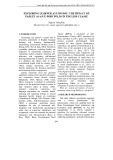
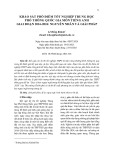
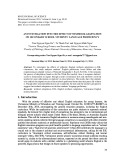
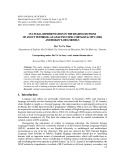


![Tài liệu Từ vựng tiếng Anh Trung cấp [mới nhất]](https://cdn.tailieu.vn/images/document/thumbnail/2025/20250913/nguyentuan250421@gmail.com/135x160/99491757910839.jpg)
![Tài liệu Từ vựng Tiếng Anh theo chủ đề [mới nhất]](https://cdn.tailieu.vn/images/document/thumbnail/2025/20250913/namdhuet@gmail.com/135x160/83251757753810.jpg)


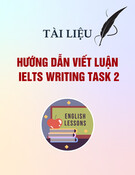
![Tài liệu Từ vựng tiếng Anh cho bé [chuẩn nhất/mới nhất]](https://cdn.tailieu.vn/images/document/thumbnail/2025/20250731/huadaithesang2509@gmail.com/135x160/18631754013896.jpg)








